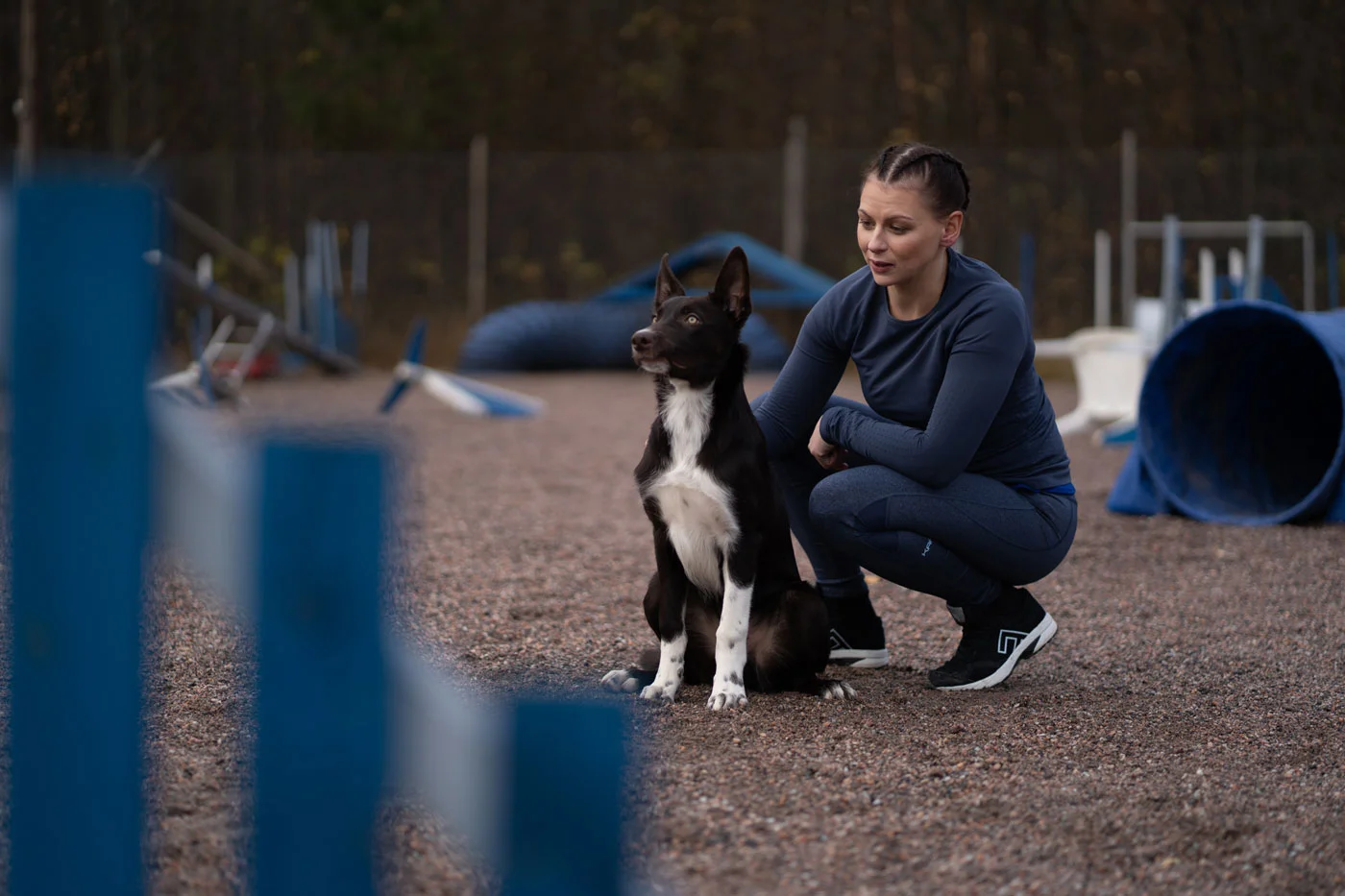Photo by Björn Fagerholm
The status of agility as a sport has strengthened, which can be seen in course profiles and speed. Of course, speed in agility means the dog’s speed, and there are people who can compensate their lack of speed with dog training, but it is certainly beneficial to be able to run, turn and accelerate fast.
Rosa-Maria Ikäheimonen, the coach and founder of Speed Up Agility, is a highly educated wellness professional and pioneer in agility handlers’ fitness training. She explains her views on an agility handler’s top condition and what the biggest mistakes in an agility handler’s fitness training are.
Fitness training of agility handlers is changing
Rosa thinks that the change in the way agility handlers train their fitness is slower than the change in course profiles. “Modern course profiles require fast motion. Without it, it’s harder to succeed. Both speed and fitness are needed, not only for fast motion, but also for the handler’s ability to concentrate and handle the dog with precision throughout the course and throughout the competition day.”
““I believe that in 5 years, agility handlers will pay much more attention to their own holistic training.””
The best possible physical condition for agility - what is it?
Rosa questions whether it’s important in agility to be in top condition: “I think that if you’ve built up a good base fitness for the sport in a systematic and progressive way, more important than top condition is that you have recovered well before you participate in a competition.”
“An agility handler has reached best possible condition when his or her physical deficiencies don’t weaken the performance.” In other words, according to Rosa, you are in best possible condition when:
You have time to do handling that requires speed to make it to the next critical point
You can do an explosive start in order to not be late from the next critical point
You can stay attentive and concentrate throughout the competition day
You are able to perform with confidence and courage
““An agility handler has reached best possible condition when his or her physical deficiencies don’t weaken the performance.”
The 3 biggest mistakes in an agility handler’s fitness training
Not training or training incorrectly by, for example, doing long steady-state runs.
No goals or plans
Goals and plans add motivation and direct your thoughts and actions in the right direction. Goals and plans are an important part of your development.
Recovery and training load are not in balance, when you don’t develop and the risk for RSI (repetitive strain injuries) increases.
Read also:
How to build a training program for an agility handler - step by step
Ole Kristoffer Sagløkken: Always quality before quantity in agility training
Where is agility heading? - Jenna Caloander’s thoughts after competing and training in 14 countries
Mark Laker: Set goals to get motivation and drive in agility training

